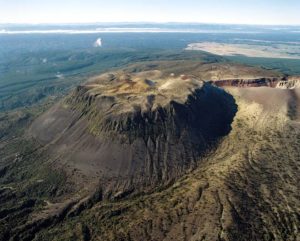While researchers find out more about the risks and behaviours of volcanoes and earthquakes, a leading disaster risk reduction expert says we’re too focused on reacting to disasters rather than preparing for them.

Former director for the UN’s Office of Disaster Risk Reduction Elizabeth Longworth spoke to Radio NZ ahead of a seminar on Monday on New Zealand’s management of disaster risk. She said New Zealand was already behind many other countries in developing a national database to record natural disasters and their associated costs.
“In addition to being prepared, we have to understand our risks,” she said. A database that included not just major events, but also smaller floods and droughts, would help the country better prepare for potential future costs.
“I think we would find that there is a huge appetite from people who are sick and tired of having their homes flooded, washed away or their farming or their horticultural business interrupted or damaged, there would be a huge appetite for those who suffer over and over and over for us all to be a lot more proactive around prevention.”
Tarawera research may help identify volcano risk
International research examining zircon crystals from the Taupō Volcanic Zone might make it easier to know when a volcano is at an increased risk of eruption. Published last week in Science, and including University of Canterbury’s Dr Darren Gravely, the research looked at crystals expelled from Mt Tarawera during the Kaharoa eruption of around 1314.
Rather than the typical picture of magma as a “seething mass of molten rock”, co-author Dr Kari Cooper from the University of California, Davis said the crystals showed the volcano’s magma was locked in a solid state for much of its lifespan. It was only subjected to high temperatures for a period of a few years to centuries before the eruption, which implied it might be possible to identify volcanoes at highest risk of an eruption by looking for those where the magma was heating and moving.
Meanwhile, a study suggests even a moderate-sized volcanic eruption in Auckland could cost the local economy up to $10 billion, with the push toward intensification making the city even more vulnerable to disaster. University of Auckland’s Professor Shane Cronin and Market Economic’s Dr Garry McDonald modelled a scenario of a small or medium-sized eruption at thousands of possible locations around the city.
Professor Cronin told Radio NZ that the city’s intensification made it more vulnerable to eruptions. “If you’re trying to maximise your resources to develop a compact city that’s got a very efficient transport system and so on, you tend to go for a single node and then you’ve got lots of different branches off that. You knock that node out, and the whole city goes over.”
Recent coverage of natural hazard research in local media:
Stuff.co.nz: Tarawera research could help predict when volcanoes are in a risky phase
Radio NZ: Alarm bells sounded over gaps in disaster resilience
NZ Herald: How a city eruption would hit Auckland’s economy
Stuff.co.nz: Slow-slip earthquakes, like those in NZ, can relieve pressure on dangerous faults
Radio NZ: The impact of a city eruption on Auckland
NZ Herald: Silent quakes help faults let off steam